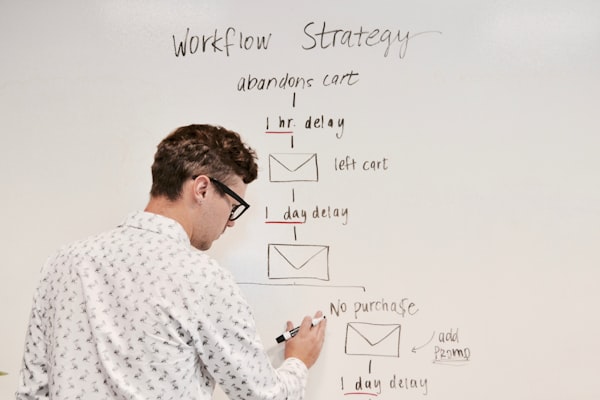How to go From Idea to MVP with basically no external funding

So you’ve got a great one-of-a-kind idea and you want to turn it into a viable product. But there’s one major problem: lack of funding. If this is you, rest assured that you can get started on the next Google or Airbnb without needing to source investment!
In fact, not having a budget can ultimately be worked to your advantage since you’re forced to really focus on building what’s most critical to the success of your idea.
To get off the ground with your venture sans investor funds, you’ll need to follow a few key steps:
- Develop your MVP
- Gather user feedback
- Iterate on your product
- Consider crowdfunding
Understanding the MVP Concept
The MVP (minimal viable product) is a core foundational piece of the agile software development framework. It’s the initial version of the product you’re building with enough basic functionality to attract early users or customers.
The entire concept is based on needing as little capital as possible to launch your product. So if you have zero financing aside from your personal savings, you’re right on track!
That said, you should also consider generating working capital through cash flow (i.e., people buying your product) rather than only spending money.
Another benefit of raising your MVP is that it gives you the chance to validate your product idea with little to no risk, before you are over-invested and under-customized results. The voice of your customers will inform how you need to pivot and evolve to be successful, and the aiming to build and validate an MVP minimizes that risk.
Prioritizing Features for Your MVP
To ensure you’re ready to release an MVP that includes all the core features your product needs, you must conduct some thorough market research. You can talk to potential customers or test out your idea on social media to gauge its saleability.
Look through the features of similar products and services and take notes on what you like and don’t like about them. What’s missing? What’s included but unnecessary?
Either way, your main focus is to find the hidden gems you can capitalize on for your own MVP. The whole point of the MVP process is to refuse to get bogged down with unnecessary time-wasters and other nonessential functions that keep you away from your core features.
With this research in hand, you should be able to determine exactly what your customers want in terms of product features that add real value to their lives. These are the functions you want to include in your MVP.
Once you have this information, you can start the process of prioritizing the various elements and tasks your developers will work on as they begin crafting your MVP. To manage this task, consider using issues and epics boards and other systems that help to visualize the items that are most crucial.
Tools and Platforms for Cost-Effective Development
You may be bootstrapping your entire MVP project without any external funds, but that doesn’t necessarily mean you’ll be going it completely alone. In fact, you have plenty of affordable and even free support tools to choose from.
Use no-code development tools or develop yourself
MVP-in-a-box solutions such as Crello, Instapage, Wix, and Webflow can all help you create a website and brand identity with no coding experience required.
Codecademy offers free coding classes, and GitHub has free and reasonably priced subscription plans if you have devs on your team already.
We’ve already talked about the importance of conducting market research before putting together your MVP plan. Surprisingly, you may be able to find a freelance market research professional to help you delve into your project. Sites like Upwork or Freelancer can introduce you to qualified individuals willing to work for a reasonable rate.
Again, the more of the early work you can handle on your own to keep expenses down, the better off you’ll be once your MVP starts generating sales. You can always go back and hire professionals for on-going maintenance, marketing outreach, and other projects after you start making money.
Gathering User Feedback Without Breaking the Bank
You might think you want to create a product that has all the bells and whistles included—after all, that’s what everyone says they want, right? The reality of the situation is that between their vocal social media conversations and product reviews, your potential customers are going to tell you what’s really missing from your MVP.
But don’t fear! This feedback will prove to be an invaluable tool as you progress forward, helping you steer your product toward greater functionality and even greater desirability.
So how can you get your hands on this feedback? At the MVP stage of the game, you should be talking to potential customers from the get-go. Go through your social media followers list and create a conversation with them in whatever DM platform you use. This works well as long as your followers are within your target market.
Depending on your industry, you can also try cold calling potential clients to discuss your idea with them. You can offer a small monetary incentive for a formal interview or contact potential clients directly on social media to find out what they want in a product like yours.
Adding a no-strings-attached survey to your website is another simple way to get this crucial feedback. Just be sure the survey tool you use is linked to your website. Otherwise, it’ll be too much of a hassle for people to go off and locate it on their own. Also, you won’t have to pay for this tool 100% of the time.
Some standalone survey tools offer a small number of surveys for free. CustomFit AI believes that your user feedback is so crucial that its customized survey tools are completely free. Free plans are limited for all brands, but some of them offer unlimited surveys and responses and access to additional product and services.
If you want to use a more sophisticated tool, or believe you need to send out many more surveys than a basic plan allows, you can use them temporarily and then downgrade your subscription plan as soon as you’ve acquired the requisite feedback.
You even have the option of using the free version of each tool in rotation to cut costs even more. Just be aware that you might lose the ability to access some feedback statistics and reporting capabilities, which can reduce the value of the feedback people are providing to you.
So while you may have difficulties when it comes to funding, you still have plenty of help available to connect with potential MVP buyers with your MVP product.
Iterating on Your MVP: Next Steps After Initial Feedback
Even with all your initial market and user research, you’ll likely still find that your users have no qualms about the shortcomings in your MVP. While this is good news for your future success, it may take time and additional expense to make changes to your product as well as retest it on potential user groups.
Keep in mind, again, that the purpose of the MVP is to get a minimum though feasible product on the market swiftly. The MVP concept is not for lazy people who don’t properly plan for its development.
Once you have this initial feedback, your duty is to seize the opportunity use it to keep iterating on your product until it becomes the gold standard in its segment of the market.
To make these iterations as cost-effective as possible, you’ll have to roll up your sleeves and address the problem at hand on your own. Depending on the problem and its complexity, you can get advice and guidance from your developers, social media followers, friends and family, or other trusted connections within the industry.
Solve what you can, and as quickly as possible. If the fix requires extensive research and program changes that you don’t know how to perform, that’s when it might be necessary (and potentially cost-effective) to hire someone to step in and help with the task.
Don’t make changes just because one person suggests you do so. But if you start getting a pattern of the same complaint over and over again from other people, then take note of it.
Remember, your product is the main and possibly the only reason your customers are interacting with you in the first place. So continually improve your MVP until there’s only a small chance someone would want to see any better product on the market. This is standard business practice for all successful startups.
Conclusion
Don’t let a lack of investors put your new venture into a tailspin. In fact, able to sidestep outside funding can prove beneficial to the longevity of your product.
You also have a multitude of free and largely helpful digital tools at your fingertips to streamline the MVP development and gathering process. This ultimately gives you the ability to buckle down on your product’s first iteration while still collecting vital customer feedback to help you build a better second design and beyond.
Of course, the point of an MVP is not only to develop an iterative product but also to generate revenue, which can further support the rest of the activity of your business as well as future iterations of your product to help it stay relevant.




